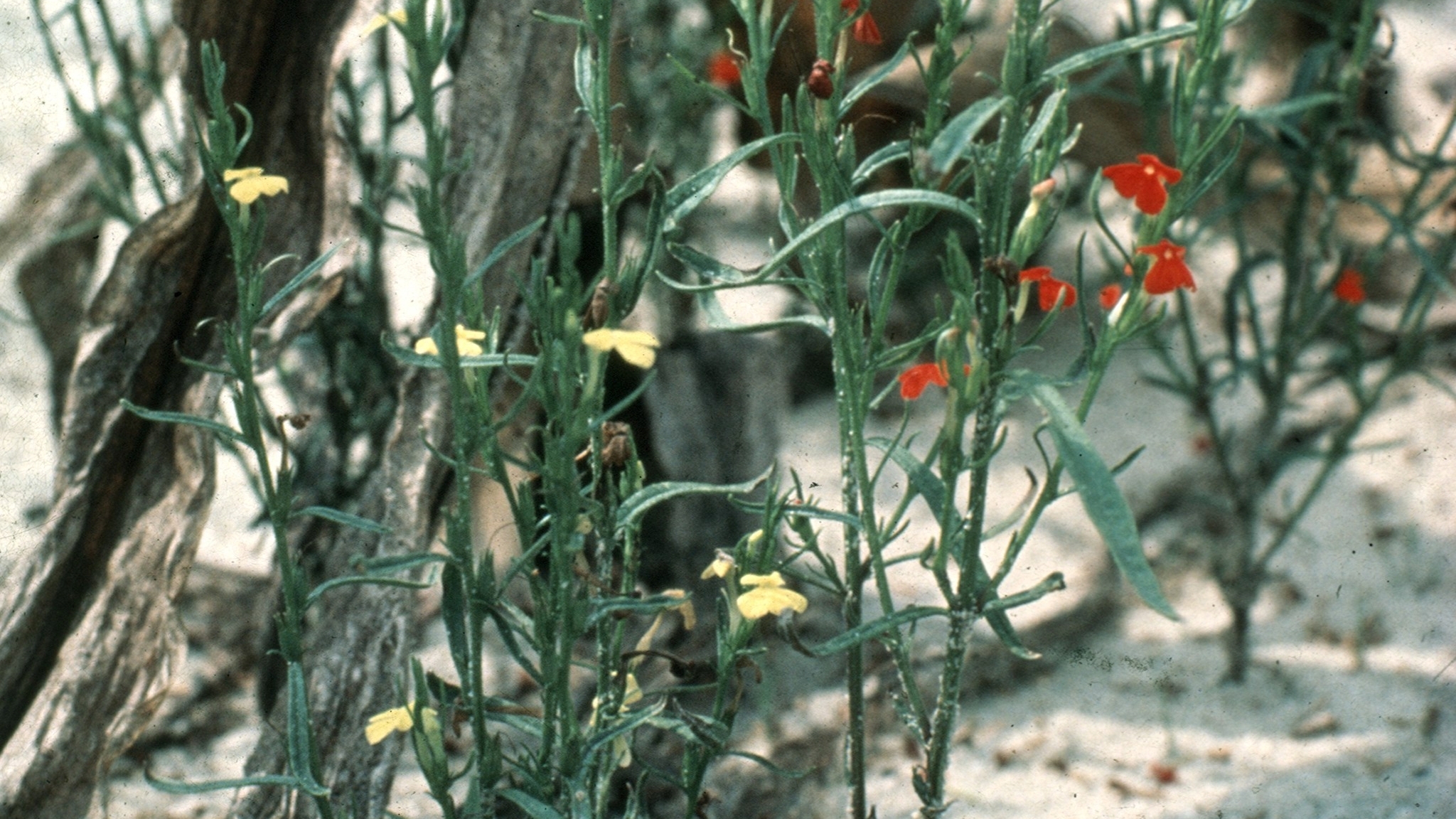Witchweed

Witchweed (Striga asiatica) is a parasitic plant that attacks corn, sorghum, sugar cane, rice, and other important crops. The blossoms are usually red but occasionally yellow blossoms occur. Unlike other weeds that only compete with crops for sunlight, water, nutrients, and space—witchweed attaches itself to host plant roots and causes direct damage. Currently witchweed is only found in seven North and South Carolina counties.
Witchweed can only grow if it's attached to another plant. It deprives its host of valuable nutrients, energy, and moisture causing significant yield reductions. Each witchweed plant can produce thousands of seeds that can remain dormant in the soil for over a decade. Witchweed is native to Africa, India, the Middle East, and China. Before APHIS' eradication efforts, witchweed was found in 38 North and South Carolina counties.
- Seasonal Activity
- Witchweed emerges from the soil beginning in late June and flowers about 2 weeks later. Swollen seed pods follow, liberating thousands of microscopic seeds, which can live in the soil for at least 10 years.
- Host Symptoms
- Yellowing leaves
- Wilting
- Death
The tiny witchweed seeds are spread naturally by wind or water.
Interstate movement of witchweed requires a permit. Additionally, regulated articles (152.15 KB) require a certificate or permit.
Growers should not attempt to treat witchweed on their own. If you think you have found this plant on your property, refer to the reporting information below. The State plant health director or State plant regulatory official will help you identify the plant. If confirmed as witchweed, there are several control options.
Report Plant Pests and Diseases
Have you seen this pest or signs of pest damage? Immediately report your findings.
Find your State plant regulatory official
Find your State plant health director
Controlling Witchweed
Since its discovery in North and South Carolina, witchweed's spread has been halted and infested acres have been significantly reduced.
- Witchweed Quarantine County Map (829.09 KB)
- Witchweed Regulated Area
- Witchweed Regulated Articles (152.15 KB)
Congress first allocated funds to eradicate witchweed in 1957 and they continue to fund the program today. APHIS maintains strict import requirements to prevent the entry of additional witchweed plants or seeds into the United States. We also work with State and local partners to detect, contain, and eradicate infestations. Eradication happens in three phases:
- Surveys to find and map all infestations
- Quarantines to prevent people from spreading witchweed beyond the infested region
- Control activities to prevent existing plants from producing seeds
We work with Federal and State partners as well as the general public.

